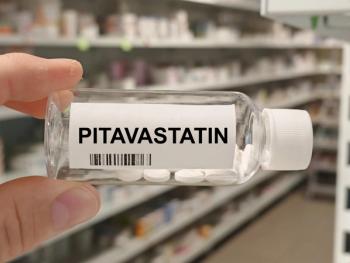
- April 2022
- Volume 88
- Issue 4
Monitoring for Mistakes in Patients With Low Health Literacy Is Crucial
Here are 8 diabetes areas where pharmacists should be more aware of error.
Many community pharmacists work with patients with
Most health care organizations track errors, but the data they collect are often part of their performance and quality improvement programs and are rarely available publicly. Recent discussions with certified diabetes educators identified 8 areas where pharmacists should be more aware about the possibility of error.
1. Injecting insulin after meanls when it should be injected before.
Giving insulin before a meal ensures that its onset matches the absorption of glucose consumed during the meal.1,2 Clinicians use different types of insulin for mealtime doses. Compared with regular insulin, rapid-acting analog (RAA) insulins aspart, glulisine, and lispro act within minutes of administration. Patients must administer regular insu- lin 30 to 45 minutes before a meal and RAA insulin 5 to 15 minutes before or immediately after they begin eating. They should not wait until they have finished eating.1,2
2. Using mealtime insulin even when they do not eat.
Administering insulin with no food consumption can cause uncontrolled blood glucose and unpredictable glycemic control. Hypoglycemia is a preventable adverse event, and pharmacists should periodically remind patients of that fact.
3. Injecting insulin into the front of the arm, possibly intramuscularly, instead of into the subcutaneous tissue in the back of the arm.
Remembering all the details about insulin can be difficult for patients. They should be reminded that insulin must be injected into the fat just underneath the skin, not into muscle, and that the correct injection sites are the buttocks, rear upper arms, stomach, and thighs.3,4 These sites have a high fat content. The needle is usually not long enough to reach muscle, but injecting insulin into muscle is painful, and the insulin will be absorbed faster, increasing the risk of hypoglycemia.3,4
4. Reusing lancets and needles for insulin and/or glucagon-like peptide-1 agonists.
The results of an international study showed that on average users of disposable syringe needle devices reused needles 3.3 times5 and on average reused insulin pen devices an 3.6 times. A whopping 26.6% of insulin pen users reused needles more than 5 times.5 The results of a 2021 study in the United States showed that about 50% of individuals reused lancets and needles, with lancet reuse more common than needle reuse.6 Reusing needles reduces copayments, especially for patients who multiple daily injections. But needle reuse for subcutaneous insulin injection is not recommended.7 It may be associated with cutaneous lipodystrophy, infection, and more painful punctures, but little evidence available regarding these adverse events.
A 2016 meta-analysis that looked at 25 studies showed that infection at injection sites was studied most often, but reusing needles was not associated with local infection.8 Findings showed a statistically significant association between lipohypertrophy and needle reuse but found the data inconclusive because the studies had been structured very differently. Needle reuse was also associated with more pain.8
5. Using expired insulin.
Using expired insulin is also common.9,10 Sometimes, the smallest quantity the pharmacy can dispense is more than the patient will use before it expires. The high cost of the products sometimes force patients to choose between using expired medication or going without. Furthermore, once in use, injectables for diabetes have a finite expiration date, even if the manufacturer’s expiration date is still good. Patients may not know that. Using expired insulin increases the risk of poor glycemic control.11
6. Adjusting medication doses without involving the primary care provider.
Although patients can self-adjust some insulins for diabetes, they should not self-adjust all medications for diabetes.12 Clinicians often see patients taking medication once a day when the label says twice daily or taking extra doses when they experience hyperglycemia at the maximum daily dose. Monitoring refill history and questioning patients when they need refills too soon can identify these nonadherence issues.
7. Not scanning the sensor often enough when using continuous glucose monitoring (CGM).
This prevents the provider from interpreting data and adjusting doses. Higher rates of CGM scanning have been linked to increased time in the glycemic target range and less hyper- and hypoglycemia. Frequent scanning also helps patients see how carbohydrate intake, exercise, illness, medication, or stress
affect blood glucose.13
Pharmacists should remind patients to scan at the frequency that their primary care physicians (PCPs) recommend. For complete data capture, they should scan the sensor at least 3 times a day, 8 hours apart.
8. Testing blood glucose with a glucometer because the PCP said to do so, but making no meaningful changes.
Testing for the sake of testing helps no one and wastes money on costly supplies. Patients should know the threshold for checking blood glucose more often, checking ketones, drinking plenty of fluids, restricting carbohydrates, and adjusting insulin. For example, a patient who has a random reading of 400 mg/dL should retest to verify the reading and take medication if that is part of the medication plan or the patient skipped a dose. Taking a walk can sometimes bring the reading down, as can avoiding food and drinking plenty of water.14
Conclusion
Knowing common mistakes is a wonderful way to prevent them. Asking a few simple questions when patients pick up refills and stressing points that are apt to cause confusion, such as expiration dates, is helpful for low-literacy patients.
Jeannette Y. Wick, MBA, RPh, FASCP, is the assistant director of the Office of Pharmacy Professional Development at the University of Connecticut School of Pharmacy in Storrs.
References
1. Freeman JS. Insulin analog therapy: improving the match with physiologic insulin secretion. J Am Osteopath Assoc. 2009;109(1):26-36.
2. Hartman I. Insulin analogs: impact on treatment success, satisfaction, quality of life, and adherence. Clin Med Res. 2008;6(2):54- 67. doi:10.3121/cmr.2008.793
3. Fallabel C. Injecting insulin into muscle: do’s and don’ts. Diabetes Strong. April 21, 2021. Accessed February 22, 2022. https://diabetesstrong.com/injecting-insulin-into-muscle/
4. Stewart K. The dos and don’ts of insulin injections. May 5, 2014. Accessed February 22, 2022. https://www.everydayhealth.com/ hs/diabetes-and-insulin-guide/insulin-injection-dos-donts/
5. De Coninck C, Frid A, Gaspar R, et al. Results and analysis of the 2008-2009 Insulin Injection Technique Questionnaire survey. J Diabetes. 2010;2(3):168-179. doi:10.1111/j.1753-0407.2010.00077.x
6. Montoya JM, Thompson BM, Boyle ME, Leighton ME, Cook CB. Patterns of sharps handling and disposal among insulin-using patients with diabetes mellitus. J Diabetes Sci Technol. 2021;15(1):60-66. doi:10.1177/1932296819882926
7. American Diabetes Association. Insulin administration. Diabetes Care. 2003;26(suppl 1):S121-S124. doi:10.2337/diacare.26.2007.S121
8. Zabaleta-Del-Olmo E, Vlacho B, Jodar-Fernández L, et al. Safety of the reuse of needles for subcutaneous insulin injection: a systematic review and meta-analysis. Int J Nurs Stud. 2016;60:121- 132. doi:10.1016/j.ijnurstu.2016.04.010
9. Thomas K. Drug makers accused of fixing prices on insulin. New York Times. January 30, 2017. Accessed February 22, 2022. https://www.nytimes.com/2017/01/30/health/drugmakers-lawsuit-insu- lin-drugs.html
10. Picchi A. The rising cost of insulin: “horror stories every day.” CBS News. May 9, 2018. Accessed February 22, 2022. https://www.cbsnews.com/news/the-rising-cost-of-insulin-horror-stories-every-day/
11. Kelly B. Nursing interventions for people with type 1 diabetes and frequent hypoglycaemia. Br J Community Nurs. 2021;26(11):544-552. doi:10.12968/bjcn.2021.26.11.544
12. Mehta R, Goldenberg R, Katselnik D, Kuritzky L. Practical guidance on the initiation, titration, and switching of basal insulins: a narrative review for primary care. Ann Med. 2021;53(1):998- 1009. doi:10.1080/07853890.2021.1925148
13. Hirsch IB, Nardacci E, Verderese CA. Flash continuous glucose monitoring: implications for use of continuous data in daily diabetes management. Diabetes Spectr. 2019;32(4):355-367. doi:10.2337/ds18-0059
14. Blood sugar at 400: what to do, risks & causes. Diabetes Meal Plans. Accessed February 22, 2022. https://diabetesmealplans.com/14776/blood-sugar-at-400/
Articles in this issue
over 3 years ago
Case Studies: April 2022over 3 years ago
Generic Product News: April 2022over 3 years ago
OTC Cases: April 2022over 3 years ago
Pet Peeves: April 2022over 3 years ago
RX Product News: April 2022over 3 years ago
Bijuva From TherapeuticsMDover 3 years ago
Support Individuals Who Abuse Alcoholover 3 years ago
OTC Product News: April 2022over 3 years ago
Services to Improve Therapeutic Outcomes Improve Star RatingsNewsletter
Stay informed on drug updates, treatment guidelines, and pharmacy practice trends—subscribe to Pharmacy Times for weekly clinical insights.














































































































































































































